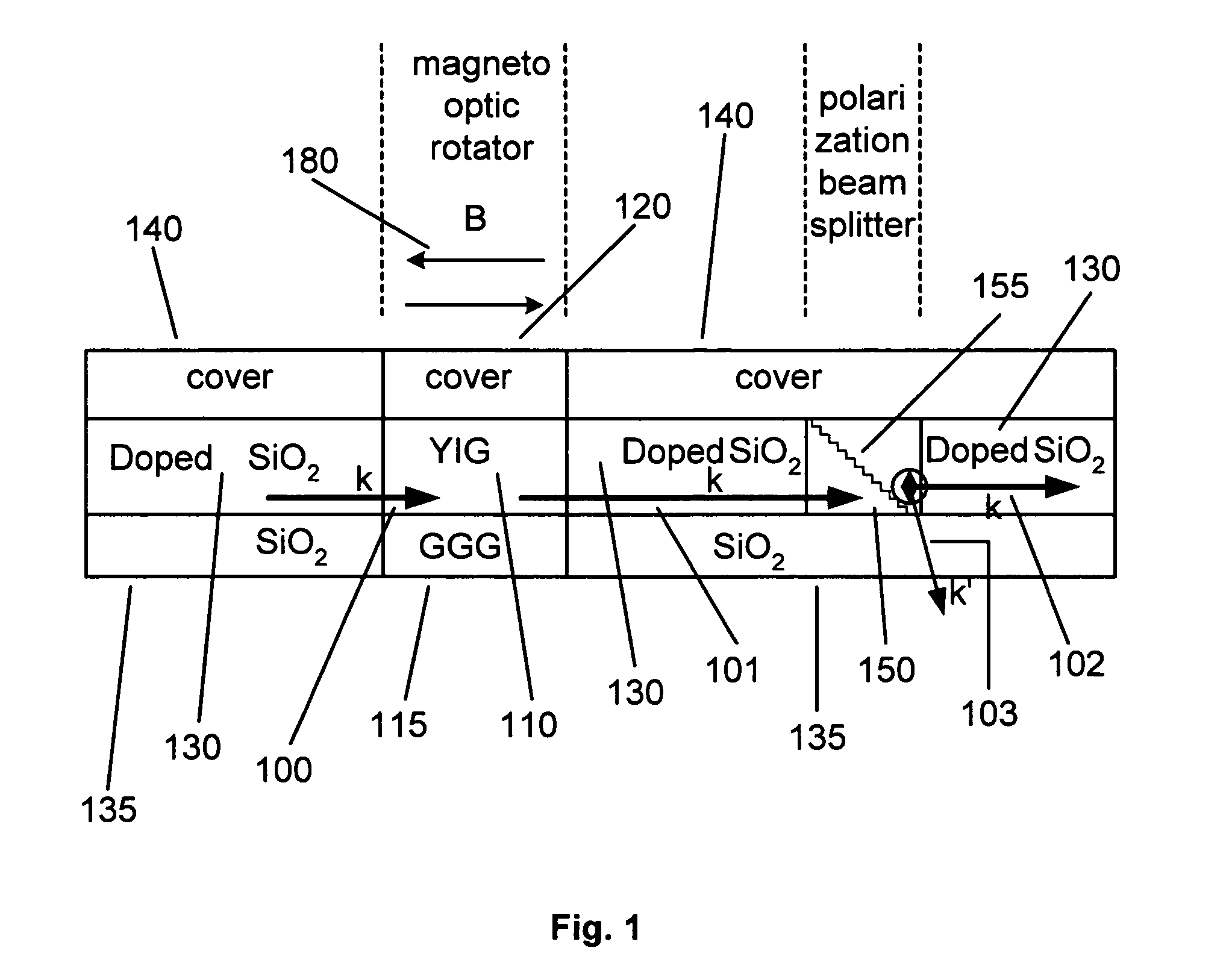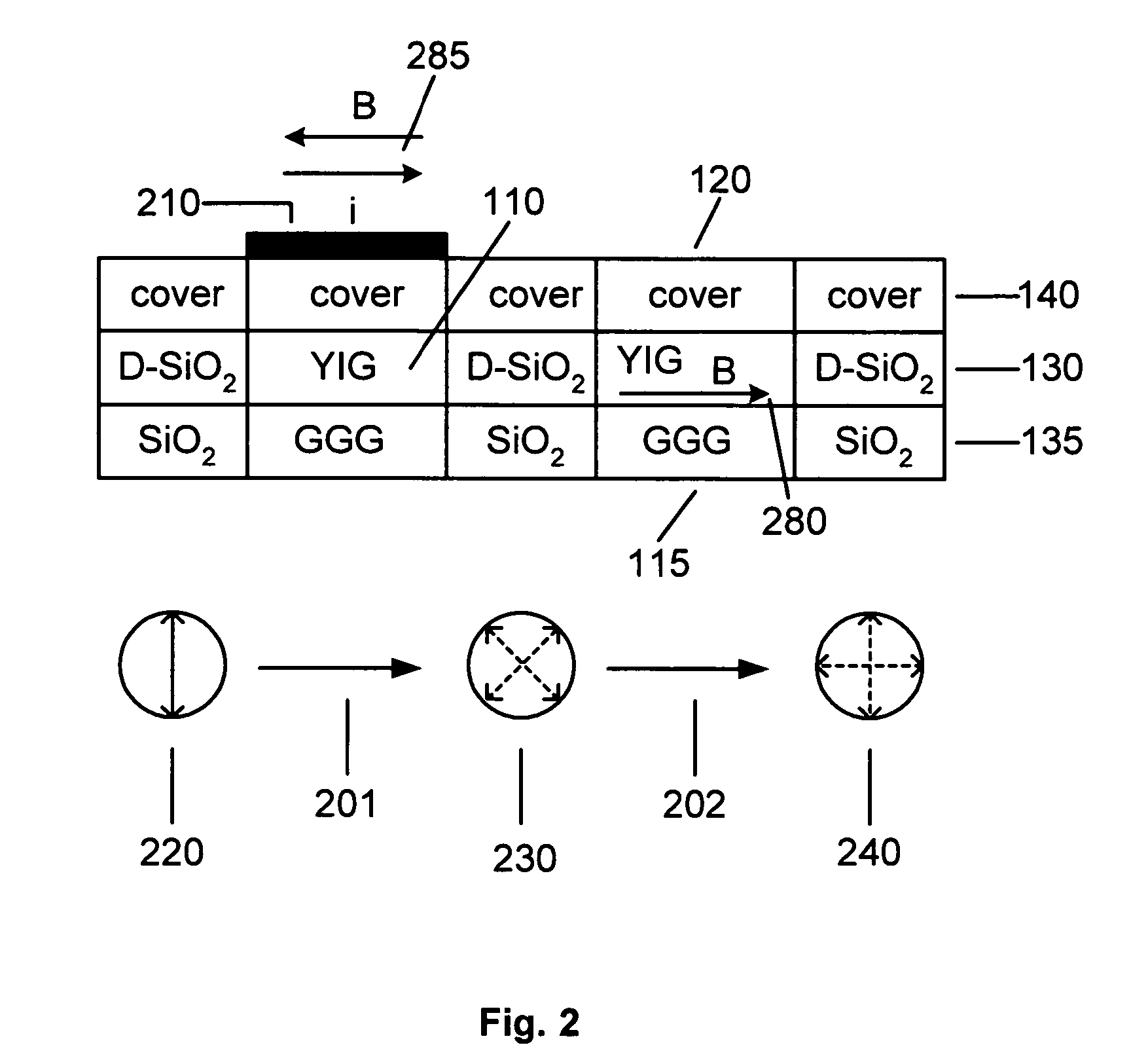Magneto-optical switching backplane for processor interconnection
a backplane and processor technology, applied in the direction of optical elements, multiplex communication, instruments, etc., can solve the problems of limiting the maximum achievable bandwidth, communication between processor chips, and reaching the limits of interconnections between chips or between multi-chip modules
- Summary
- Abstract
- Description
- Claims
- Application Information
AI Technical Summary
Benefits of technology
Problems solved by technology
Method used
Image
Examples
Embodiment Construction
[0018]FIG. 1 shows elements of a router for polarized light. The router comprise of two parts, a magneto optic rotator (MOR) followed by a polarization beam splitter (PBS). In one embodiment these two parts of the router are seamlessly integrated into an optical waveguide. FIG. 1 shows a sandwich structure for both the router and for the shown pieces of the waveguide network. The waveguide network of the optical backplane is based on a SiO2, or alternatively a polymer, waveguide structure. In one embodiment an undoped SiO2 optical layer 135 of an index of refraction (ns) is interfacing with a doped SiO2 layer 130. Due to the doping, the doped SiO2 has an index of refraction, (nf) approximately equal to 1.45. The waveguide typically needs a doped SiO2 which interfaces, that is, it is deposited on the top, or below, of an undoped SiO2. The requirement of this undoped SiO2 layer is for it to have a lower refractive index than the doped SiO2 layer. In the embodiment of a sandwich struct...
PUM
 Login to View More
Login to View More Abstract
Description
Claims
Application Information
 Login to View More
Login to View More - R&D
- Intellectual Property
- Life Sciences
- Materials
- Tech Scout
- Unparalleled Data Quality
- Higher Quality Content
- 60% Fewer Hallucinations
Browse by: Latest US Patents, China's latest patents, Technical Efficacy Thesaurus, Application Domain, Technology Topic, Popular Technical Reports.
© 2025 PatSnap. All rights reserved.Legal|Privacy policy|Modern Slavery Act Transparency Statement|Sitemap|About US| Contact US: help@patsnap.com



